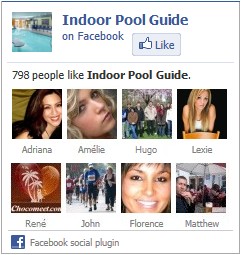
Overview
Best Practice Model
– Photometers or comparators should be used for all manual chemical tests.
– Operators should prescribe their desired range of operating parameters within the Regulatory range.
– Operators should be competent in the use of test kits.
Test Kits
Photometers or comparators, for commercial applications, using tablet or powdered reagents are recommended for all chemical tests and provide reasonable accuracy. Most test kits use solid (tablet or powdered) reagents as they have advantages in ease of storage, transport and prevention of spillage. The use of pre-measured packages eliminate the need to dispense precise amounts of reagent to each test.
All equipment should stored away from direct sunlight and kept clean, as inaccurate measurements may result from faded comparator discs or plates, dirty glassware and suspended matter in the sample.
The successful use of a comparator may be affected by the ability of the operator to discern colour intensities or colour difference. The background against which a comparator is held may also affect the colours observed.
Dip strips may be of use to indicate that a pool is somewhere within regulatory range. However, it is nearly impossible to quantify the reading accurately because the scale intervals are too far apart. Dip strips containing syringaldezine are the only ones suitable for indicating free chlorine concentrations.
Always follow the manufacturer’s instructions when using a test kit. Further training in the proper use of test kits is strongly recommended to ensure competency and to identify problems with the use of test kits.
Test Methods
The following test methods are recommended for those tests required by regulatory authorities: free chlorine/ total bromine, total chlorine, combined chlorine, pH, alkalinity, cyanuric acid, calcium hardness and some others.
Free Chlorine/Total Bromine
The DPD (dimethyl-phenylene diamine) test developed by Palin is the most universally accepted test method for measuring disinfectant concentrations within the swimming pool industry. DPD No 1 reagent is used for both free chlorine and total bromine tests. Total bromine should be recorded as free chlorine equivalent.
Total Chlorine
A DPD No 3 tablet is added to the completed free chlorine test to obtain total chlorine concentration. (DPD 1+3). The use of a DPD No 4 tablet also gives total chlorine concentration, but without obtaining the free chlorine concentration first.
Combined Chlorine
This is obtained by subtracting the free chlorine/total bromine (as free chlorine equivalent) concentration from the total chlorine concentration.
The formula is:
DPD 4– DPD 1or(DPD 1+3) – DPD 1
pH
Phenol red indicator is used as the colour range operates across that of a properly operating swimming pool. A properly calibrated pH electrode may also be used.
Alkalinity
Any commercially available pool water colorimetric test method can be used. Most indicator tests use a colour range from yellow through green to blue.
Cyanuric Acid
Melamine test reagent can be used and forms a cloudy suspension. Accuracy is dependent on concentration and equipment factors.
Calcium Hardness
A colorimetric tablet method is commonly available to estimate hardness. Hardness is calculated based on the number of tablets required to reach the required colour change, or a photometer may be used.
All Other Tests
Colorimetric, titration based reagents or electrochemical methods are available for most other test parameters.
Dilution of Samples
When a test result is at the top of the range of a test kit, samples that are measured in ppm may be diluted with distilled water before adding the reagent to obtain a reading that is on scale. The result is multiplied by the dilution factor.
If chlorine is excessively high, the chlorine may bleach the tablet and make it appear that there is no chlorine in the water. This result may cause pool operators to add more chlorine to the pool—and finally realise that excessively high levels have been reached. This can be avoided by crushing a tablet in a small volume of pool water before completely filling the sample cell with pool water and observing the pink colour turn clear.
pH measurement samples cannot be diluted. If the reading is off the scale, use another indicator or a pH meter to determine the correct value.
Chemical Limits
Proprietors should set their own desired chemical limits for operation—within the range prescribed by the Regulations.
Keeping Records
Operators are required by law to maintain records. Logbooks should be kept for at least 12 months after the last date of entry to made available on demand to an authorised officer of the Health Act. The records should then be archived for a further six years.
Records should cover the following tests and be carried out to at least the frequencies prescribed by Regulatory Standards:
– Date
– Time
– Free chlorine/total bromine
– Total chlorine
– Combined chlorine
– pH
– ORP (where fitted)
– Electronic pH (where fitted)
– Total alkalinity
– Cyanuric acid
– Calcium hardness
– Comments
– Actions
– Initials of recording operator
– Pool water temperature.

